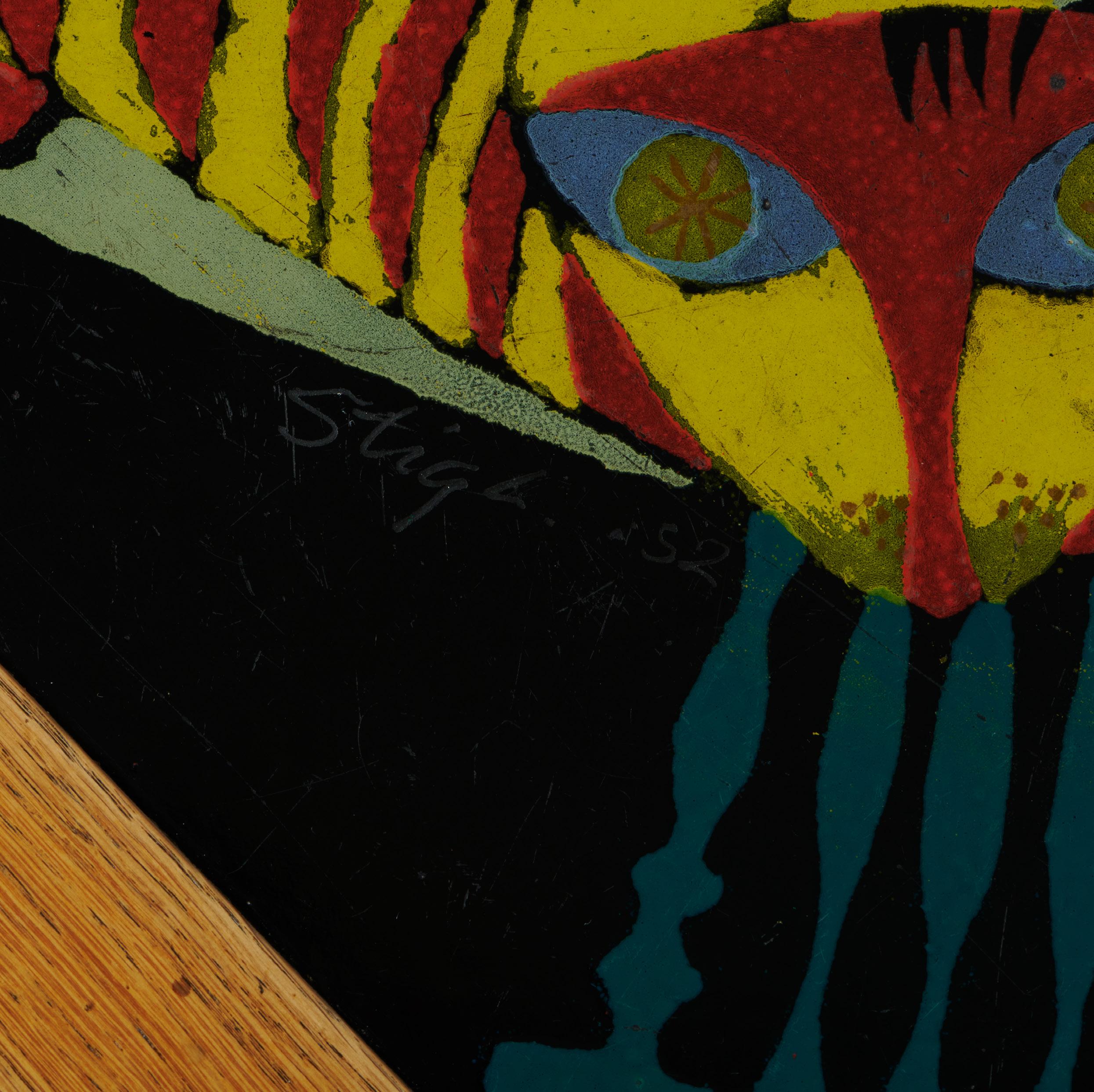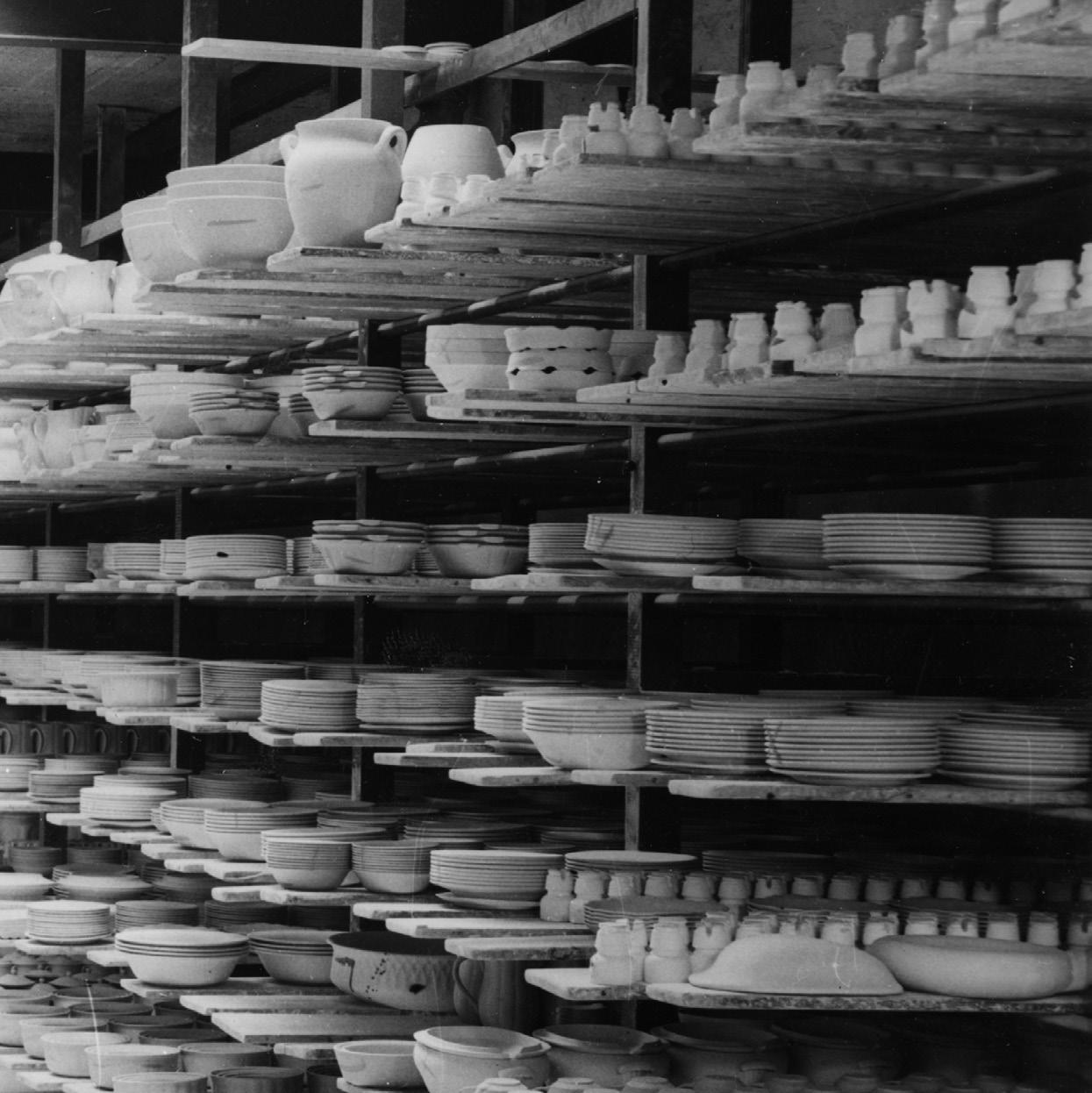

VERSATILE FACETS OF






Over the past few months, an exhibition of various works by Stig Lindberg was on show at our gallery at Sibyllegatan 53 in Stockholm. The stories, interactions and acknowledgements with viewers were heartwarming. Stig Lindberg represents a sense of nostalgia for many Swedes, whose childhood was filled with the colourful painted ceramics. It is now, 40 years after his death, that Jacksons wants to highlight the versatile facets of this multidisciplinary designer. Not surprisingly, his works are collected all over the world.
Jacksons specializes in the best of Scandinavian and international vintage design 1900 - 2000. Established in 1981, Jacksons have built one of the most extensive collections of 20th century Scandinavian and International vintage design, consistently offering rare and museum quality examples. In addition to private collectors, our pieces are located within the collections of major museums and public institutions internationally.
Jacksons
March 2023

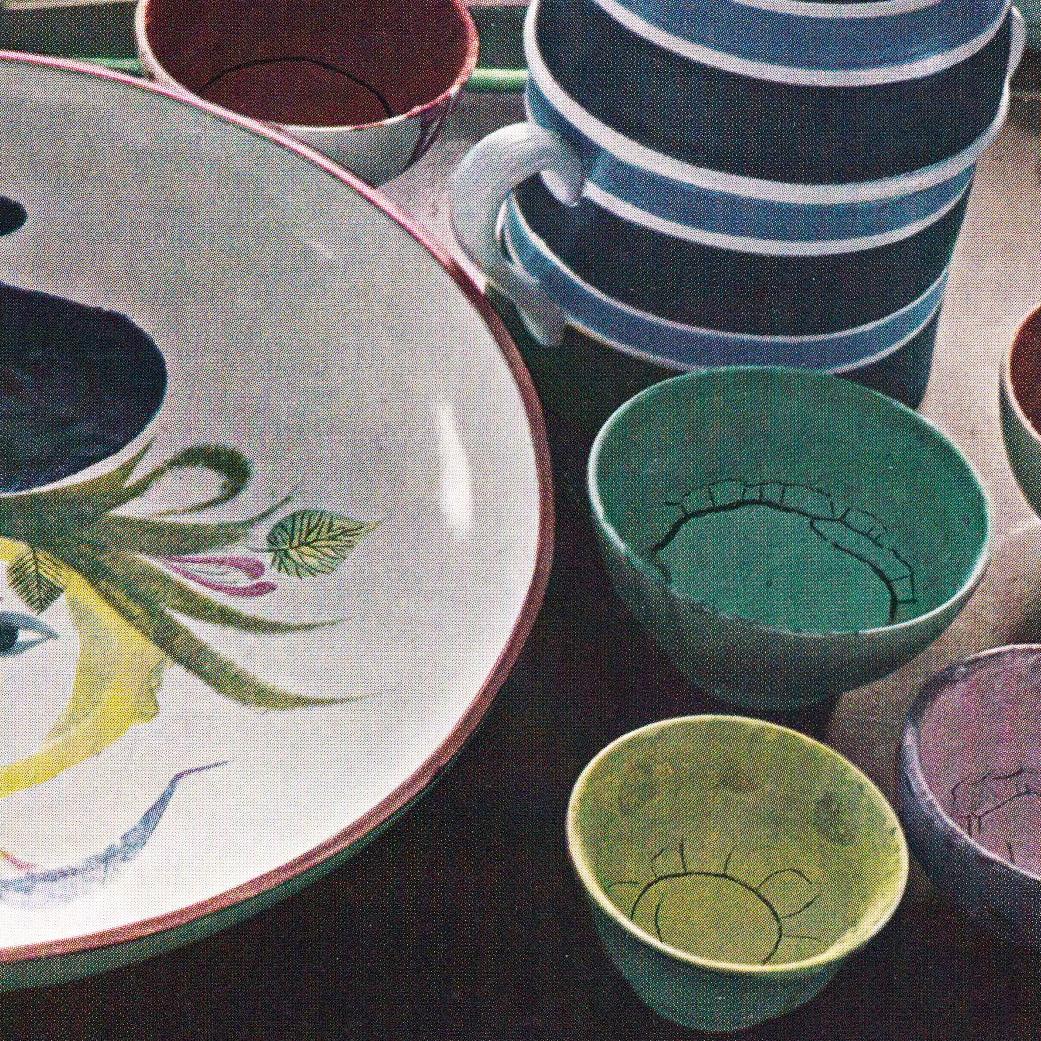
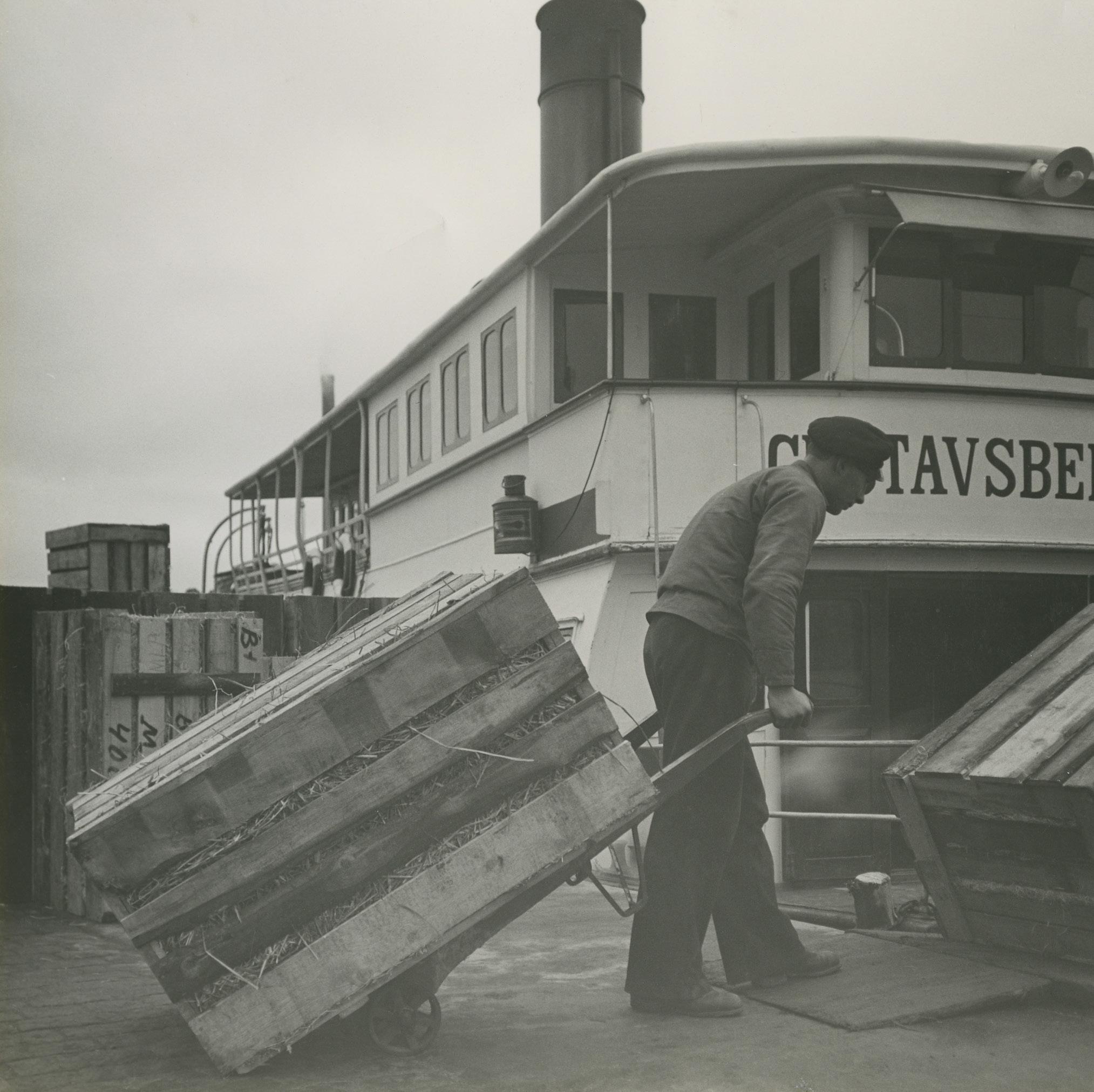
Just outside the city of Stockholm, on the islands of the archipelago, lies a ceramic factory dating back to the 17th century. It was here, at Gustavsberg, where Stig Lindberg spent most of his career. The Gustavsbergs Studio was founded in the early 1940s on the initiative of Wilhelm Kåge and Stig Lindberg themselves. The studio was intended to give artists a means of free expression, and provide them with the facilities to experiment. The studio was the one that gave Gustavsberg an association with ‘Design’, rather than industrial, ceramic products. It was at Gustavsbergs Studio that several well-known works were created, such as Kåge’s ‘Farsta’ series, or Berndt Friberg’s glazed ceramics. Under a different name, Gustavsbergs Studio continues to form a a source of inspiration, a platform for established artists, and a assembly point for creativity.

Stig Lindberg
Set of 5 Miniature Vases
One from 1965, the others from 1969
Hand thrown glazed stoneware with carving
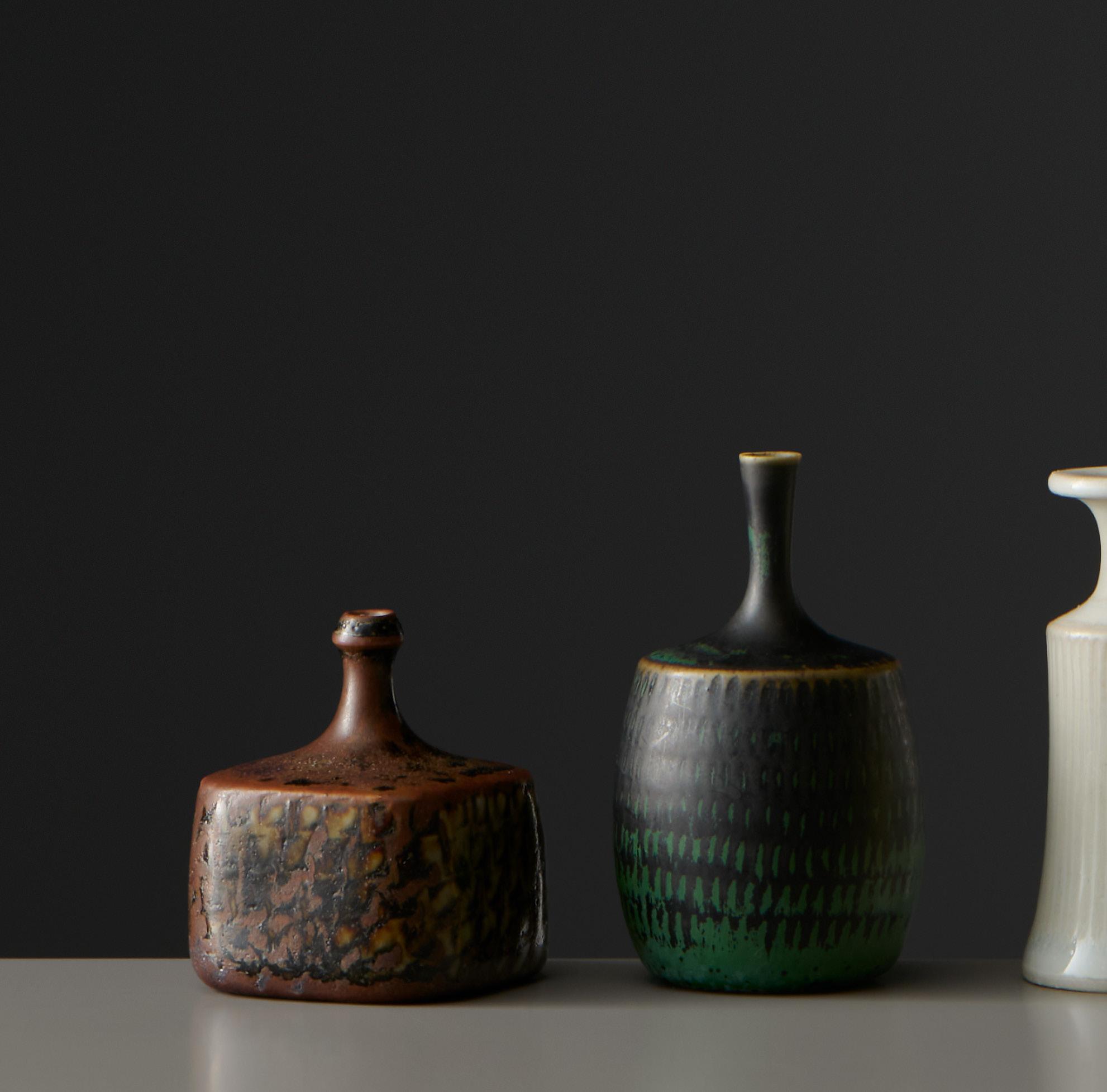
Each inscribed ‘STIG L’ with Gustavsberg Studio Hand


Produced by Gustavsberg

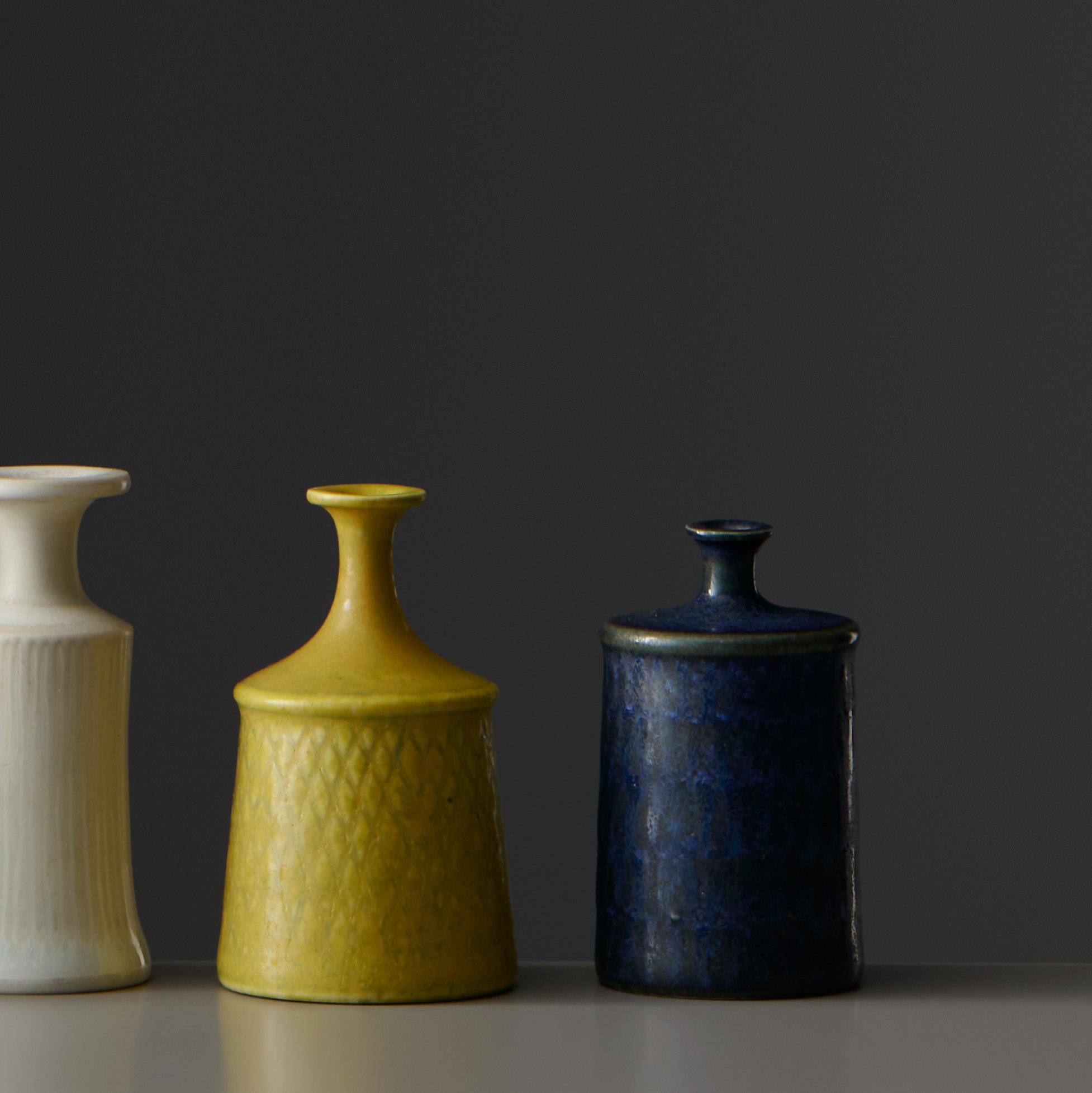



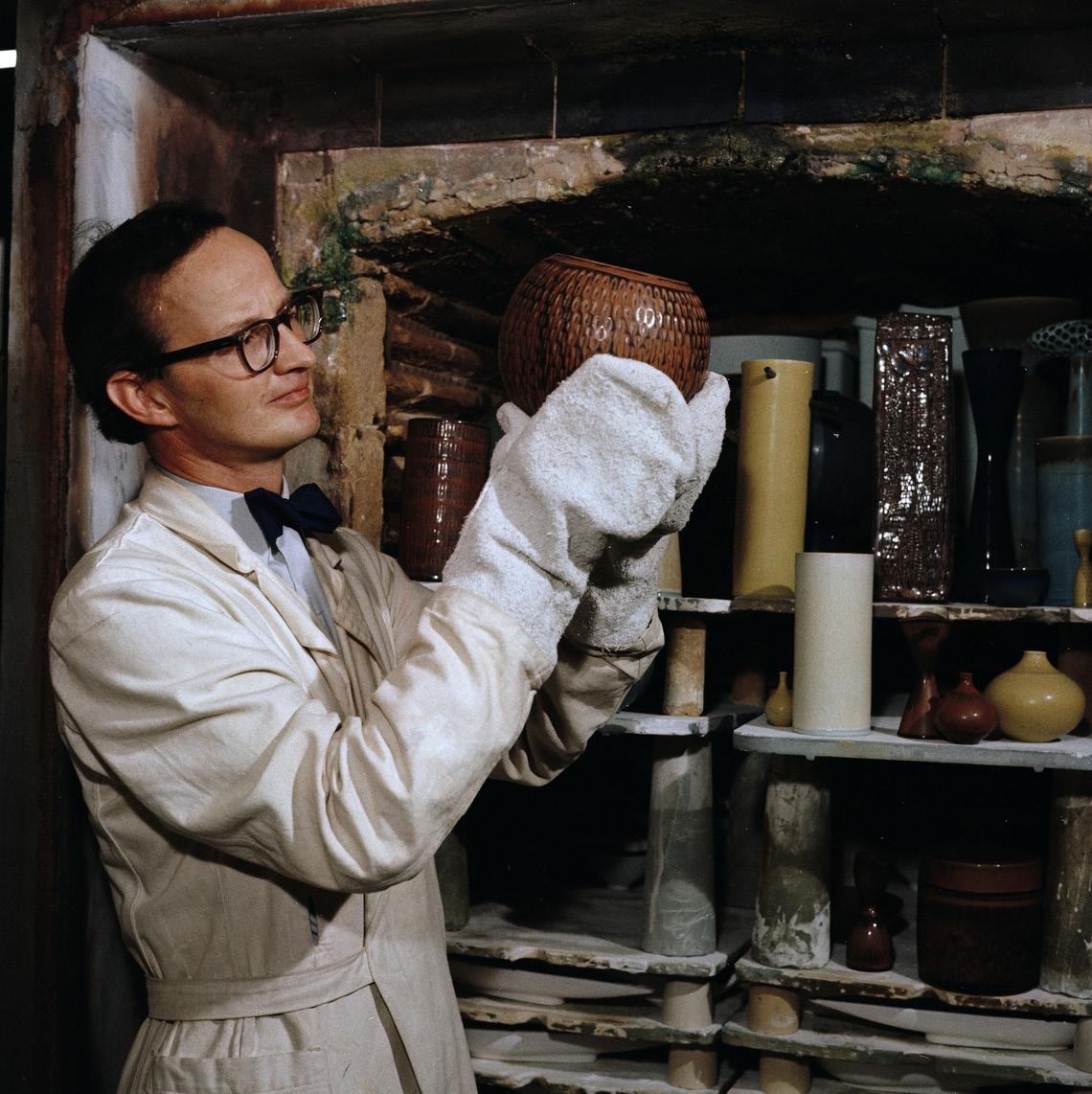
Stig Lindberg
Vase
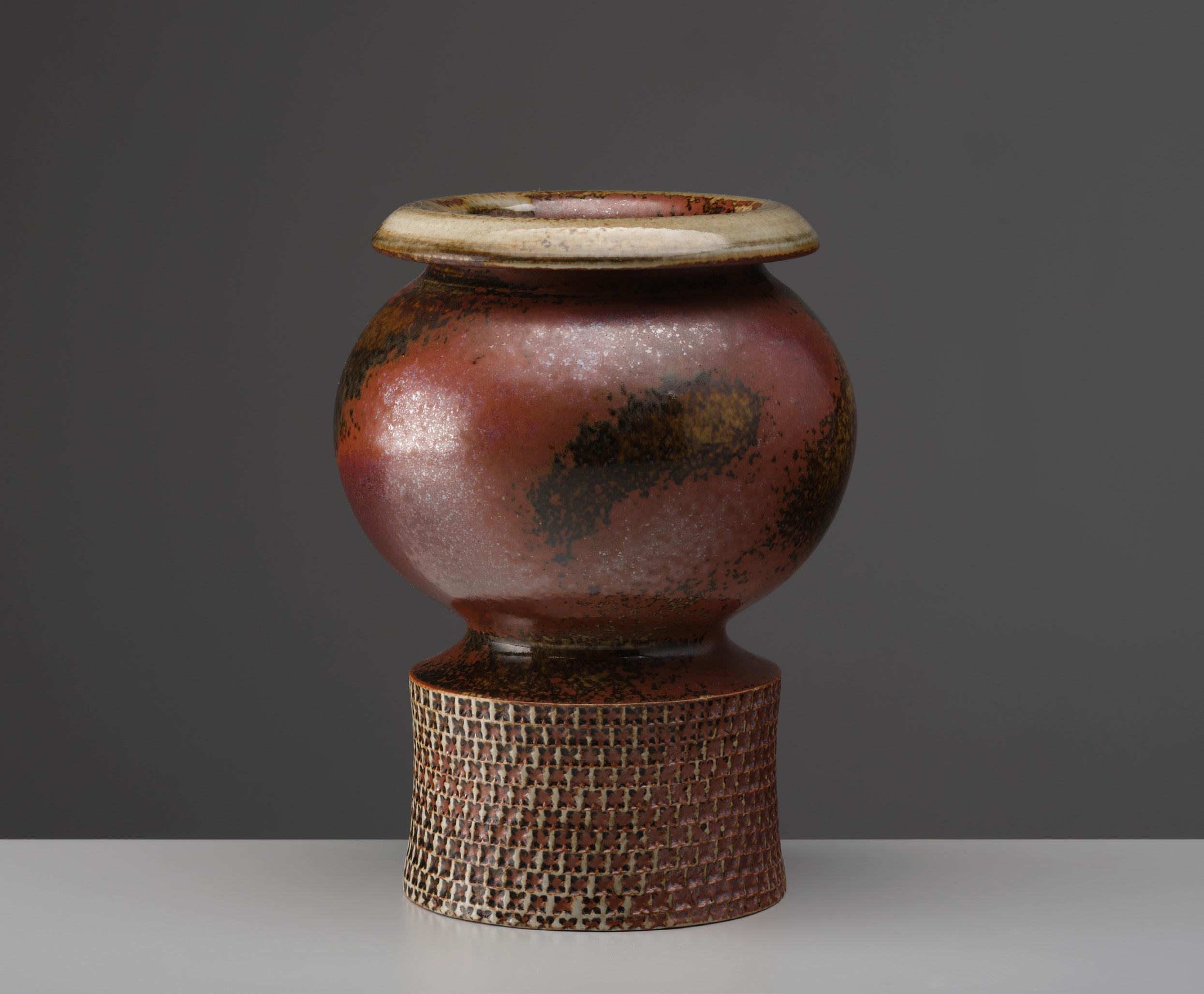
1963
Impressed and glazed stoneware
Inscribed ‘STIG L’ with Gustavsberg studio hand, impressed ‘GUSTAVSBERG’
Produced by Gustavsberg

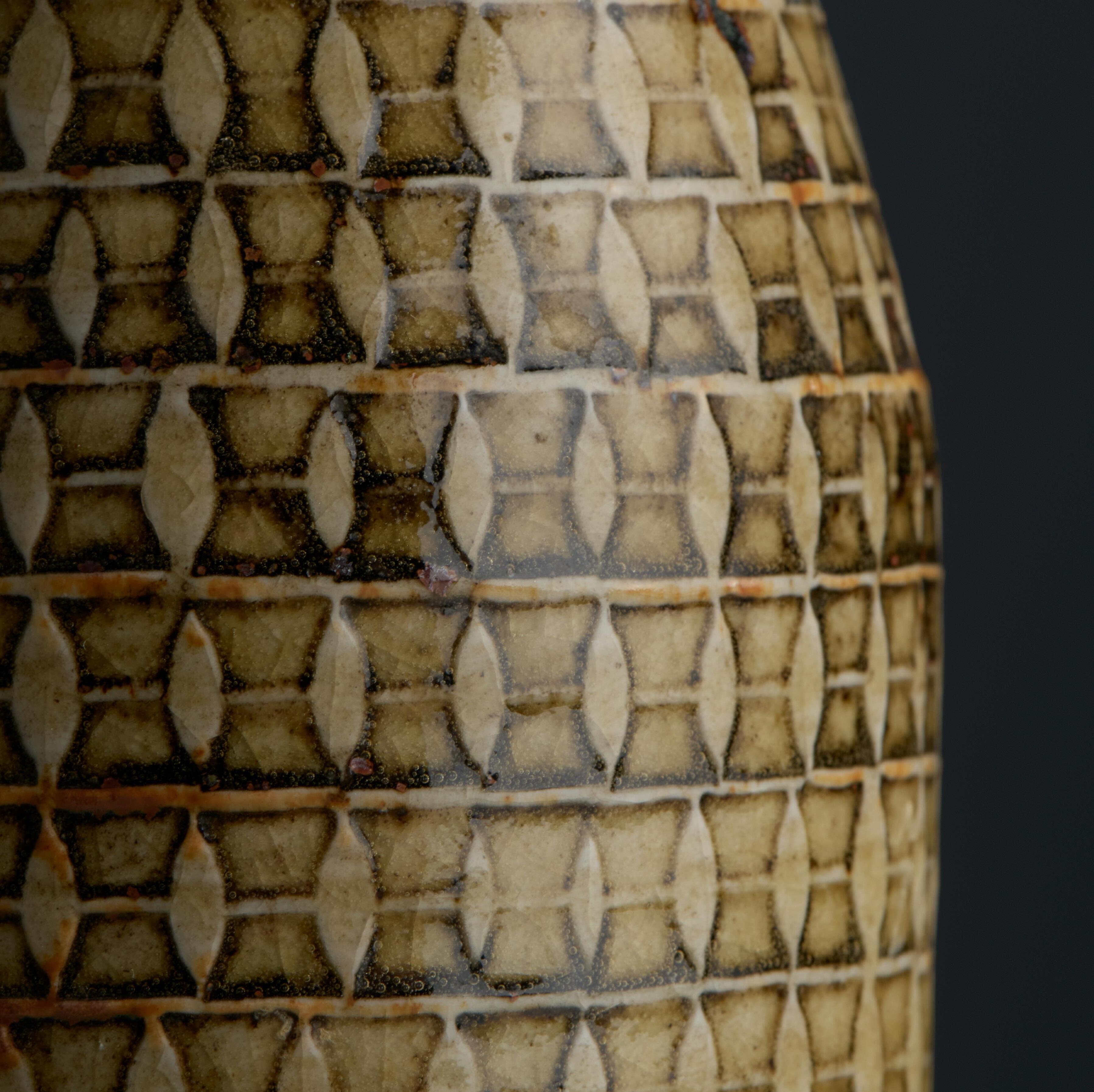
Stig Lindberg
Vase
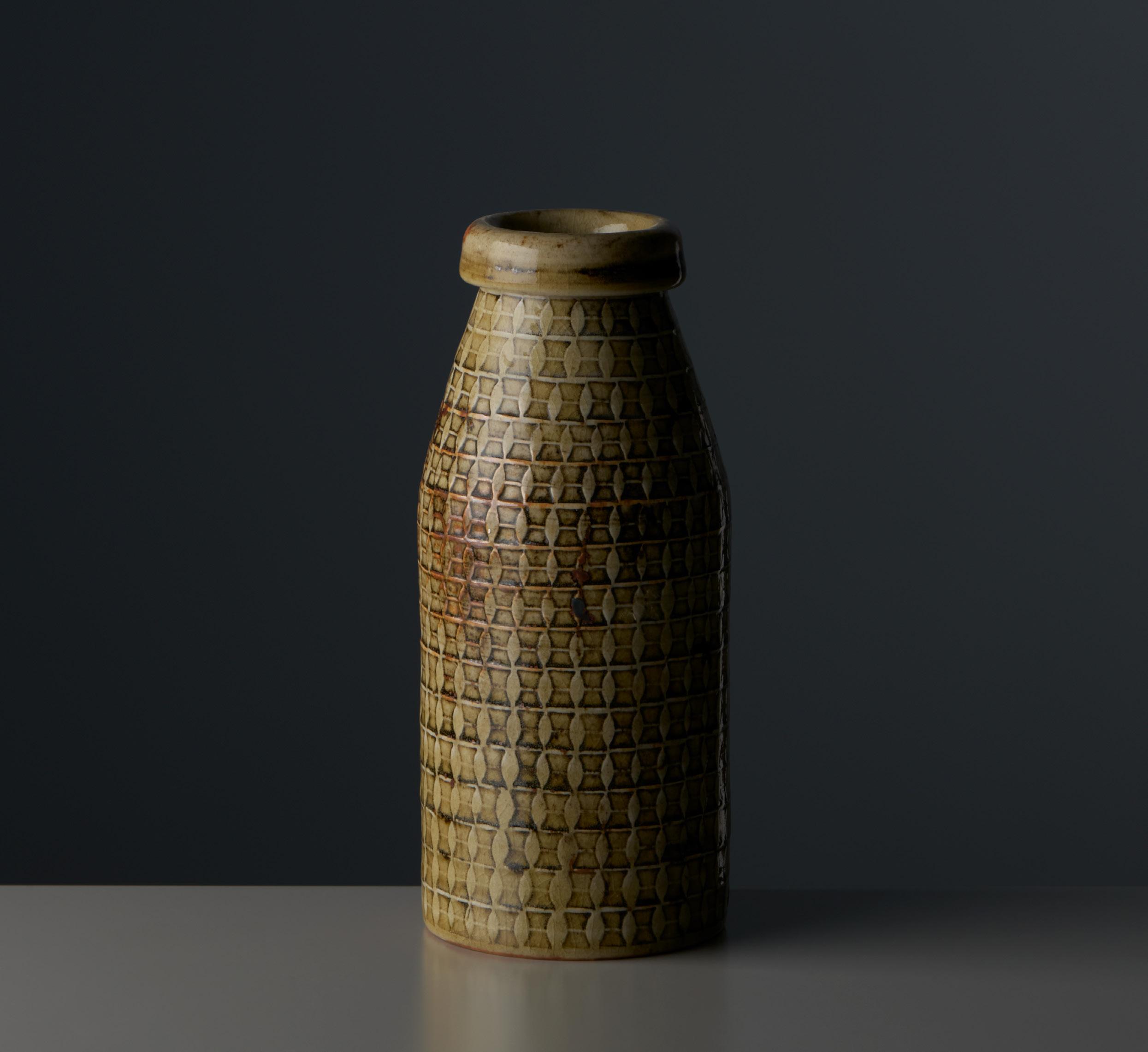
1960s
Impressed and glazed stoneware
Inscribed ‘STIG L’ with Gustavsberg studio hand, impressed ‘GUSTAVSBERG’
Produced by Gustavsberg
Stig Lindberg
Vase

1960s
Glazed stoneware
Inscribed ‘STIG L’ with Gustavsberg studio hand
Produced by Gustavsberg
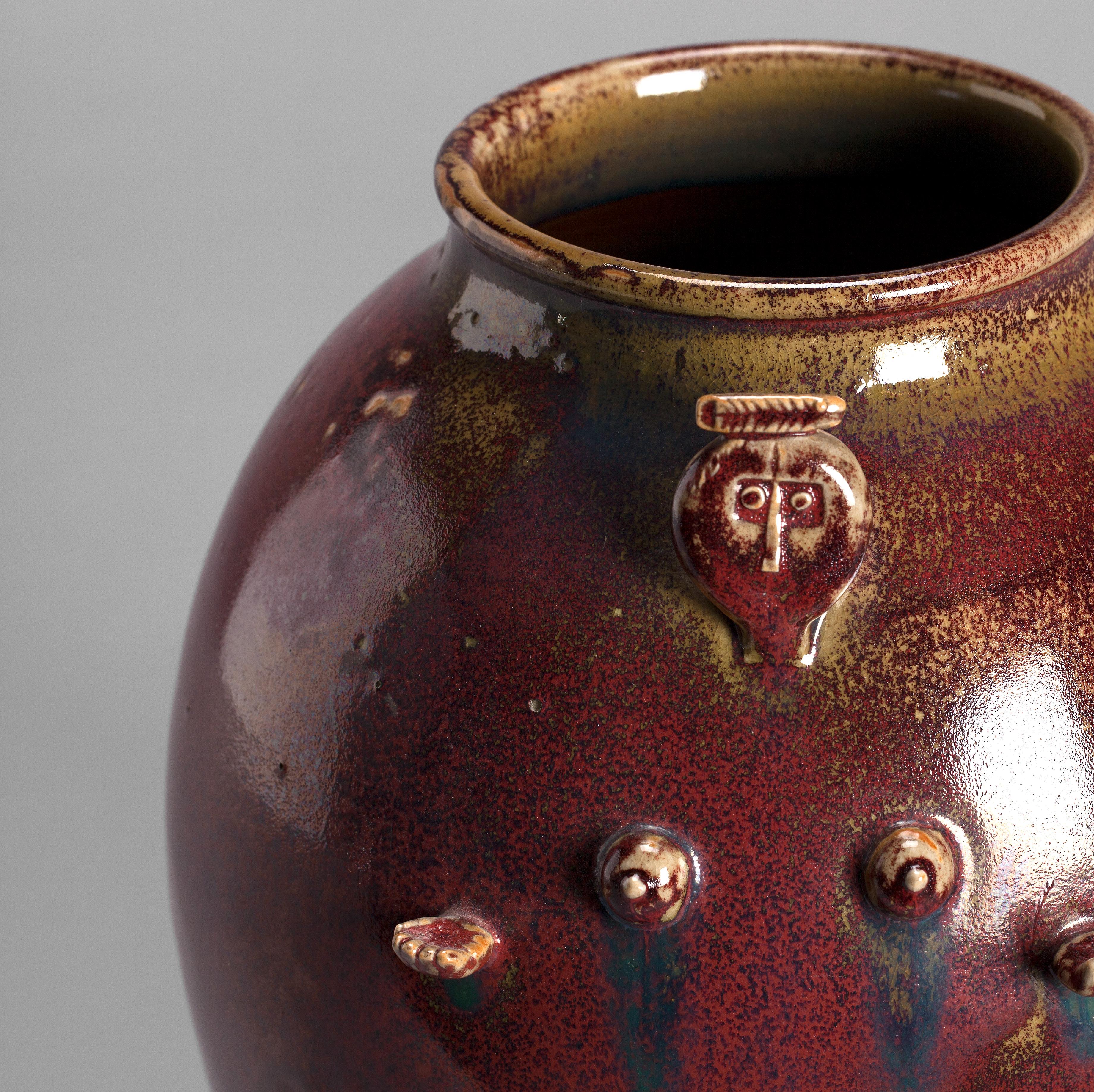
Stig Lindberg
Large Vase
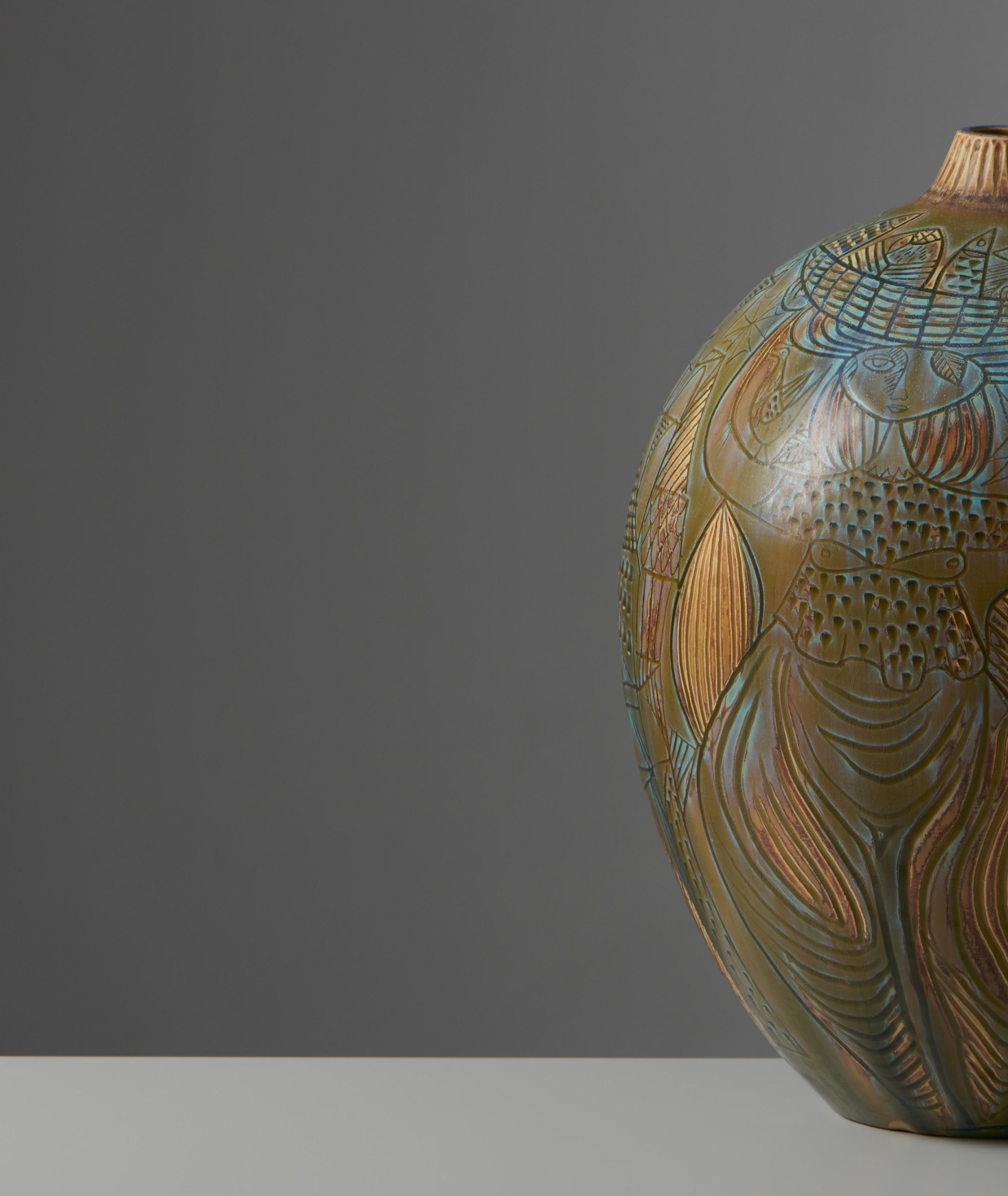
Glazed stoneware. Inscribed decoration
Inscribed ‘STIG L’ with Gustavsberg studio hand
Produced by Gustavsberg



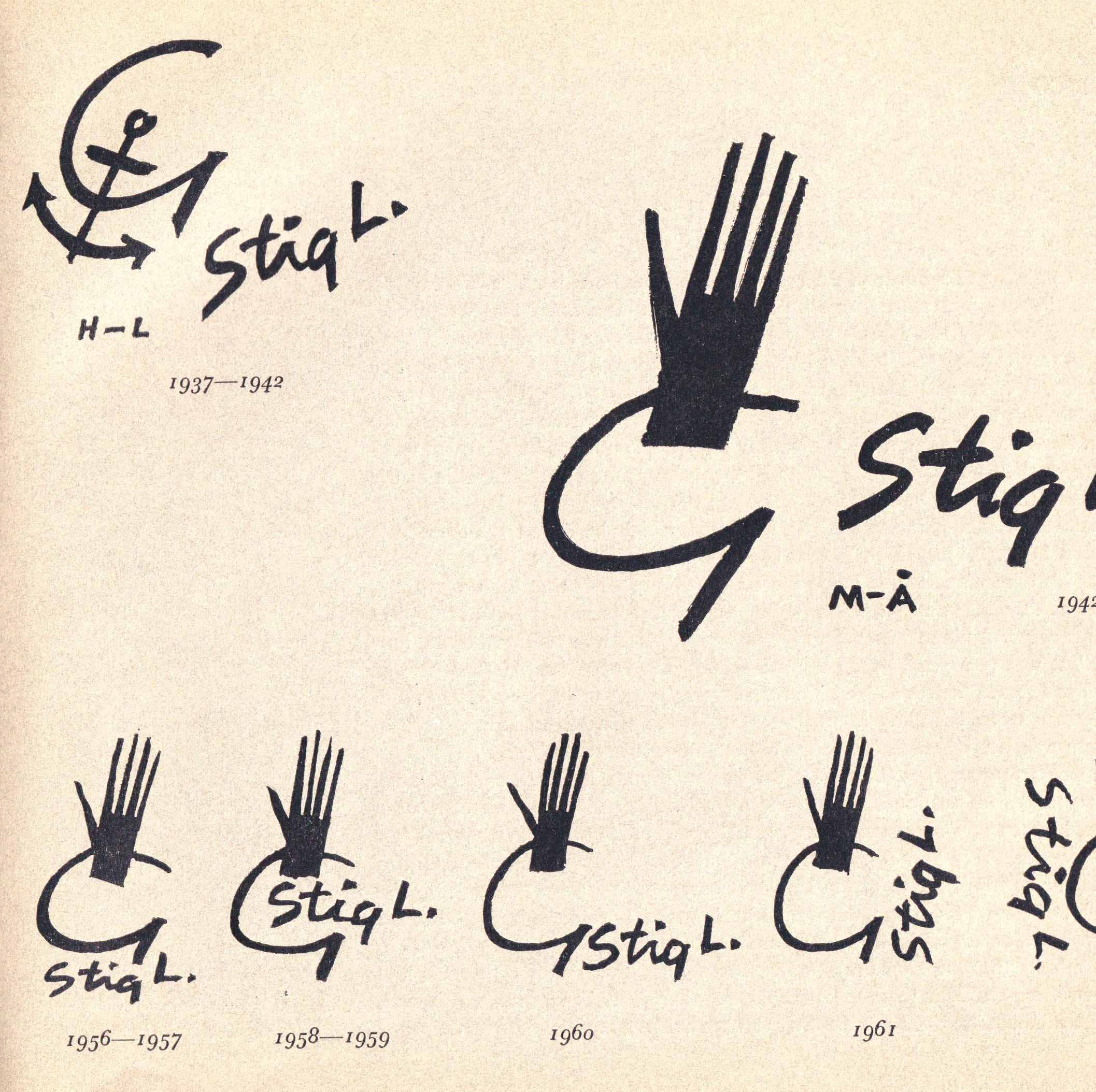
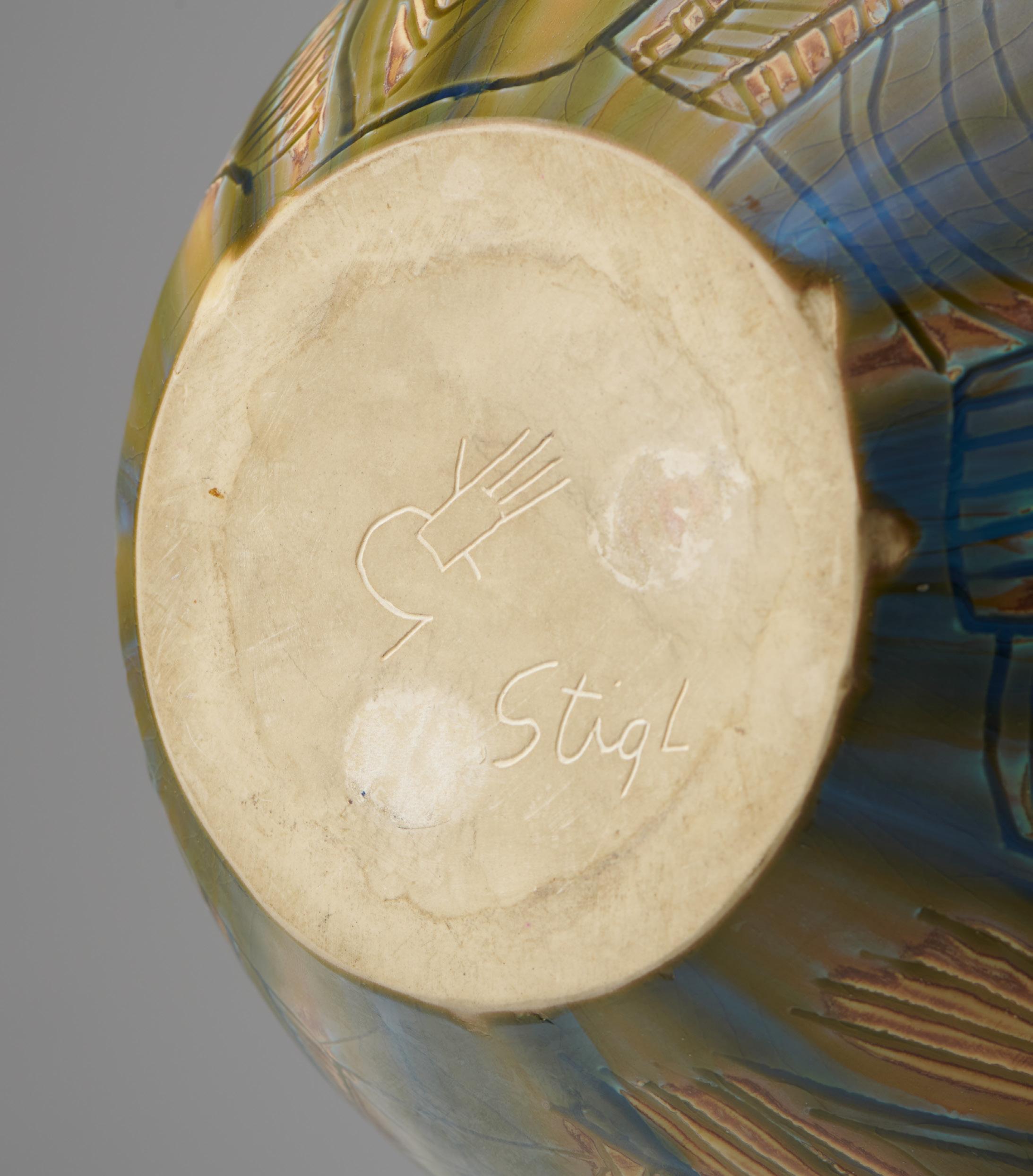
Stig Lindberg
Set of Five Vases
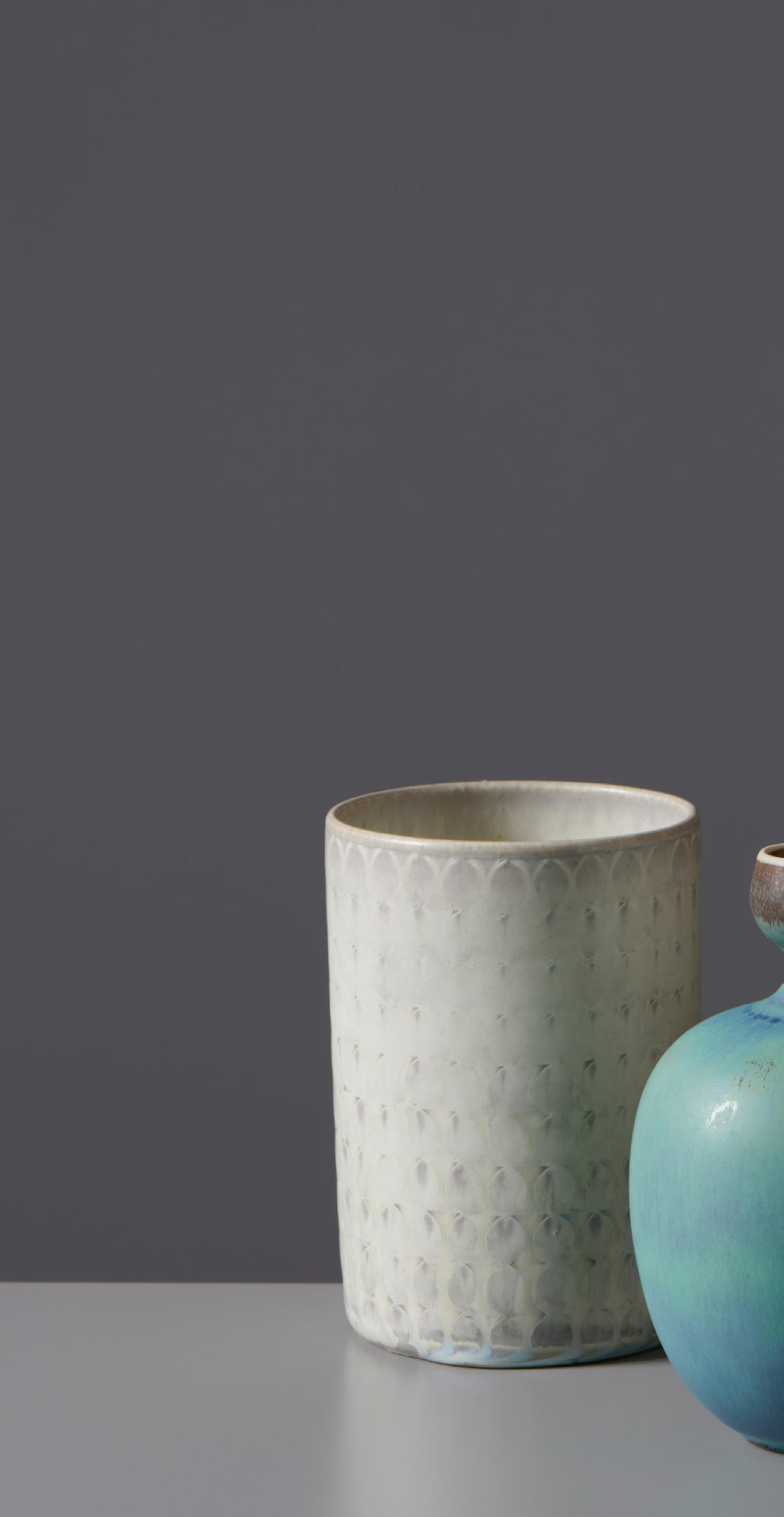
Executed between 1953-1956
Glazed stoneware
Inscribed ‘STIG L’ with Gustavsberg studio hand

Produced by Gustavsberg


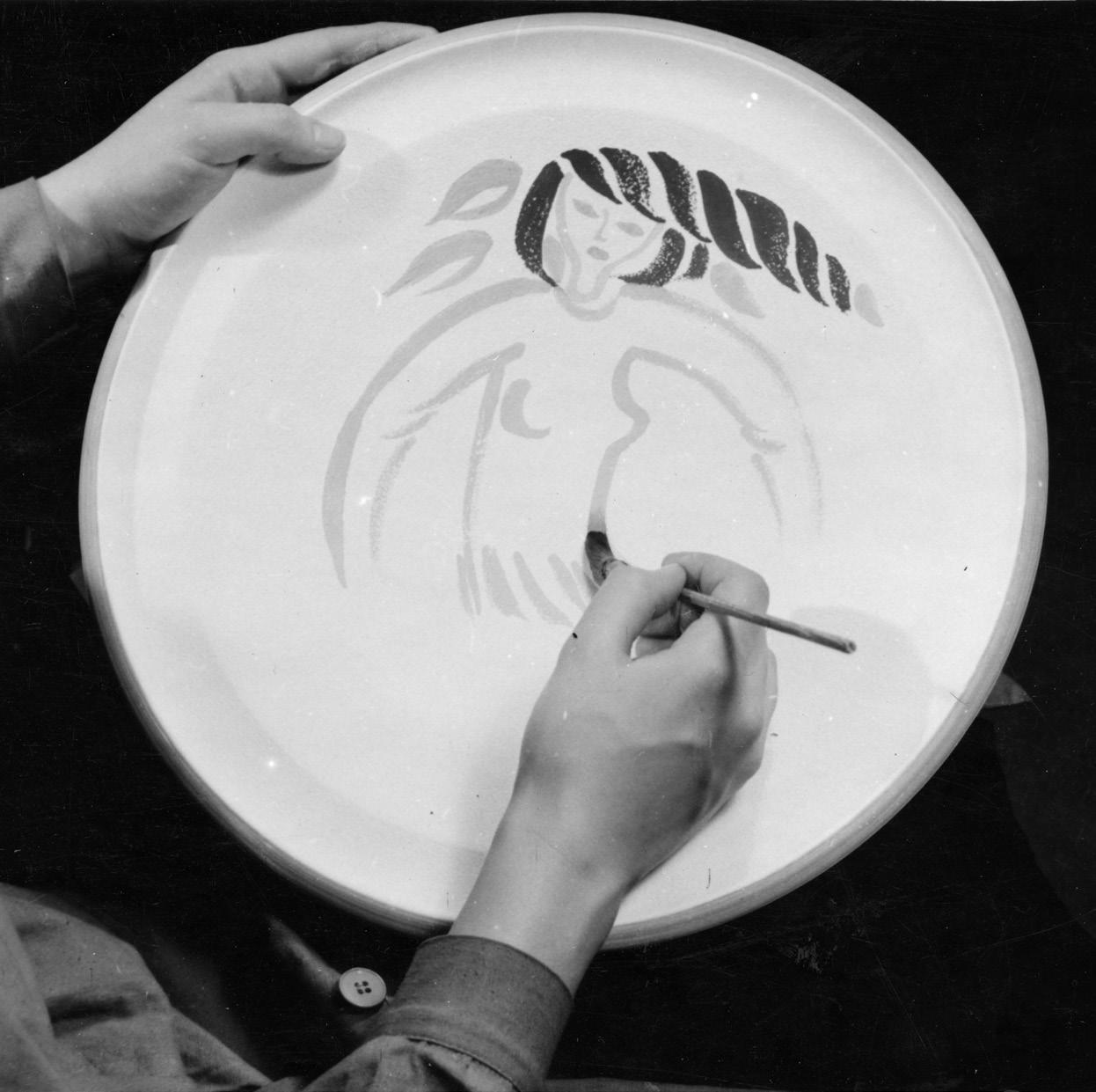
Stig Lindberg
Faience Vase
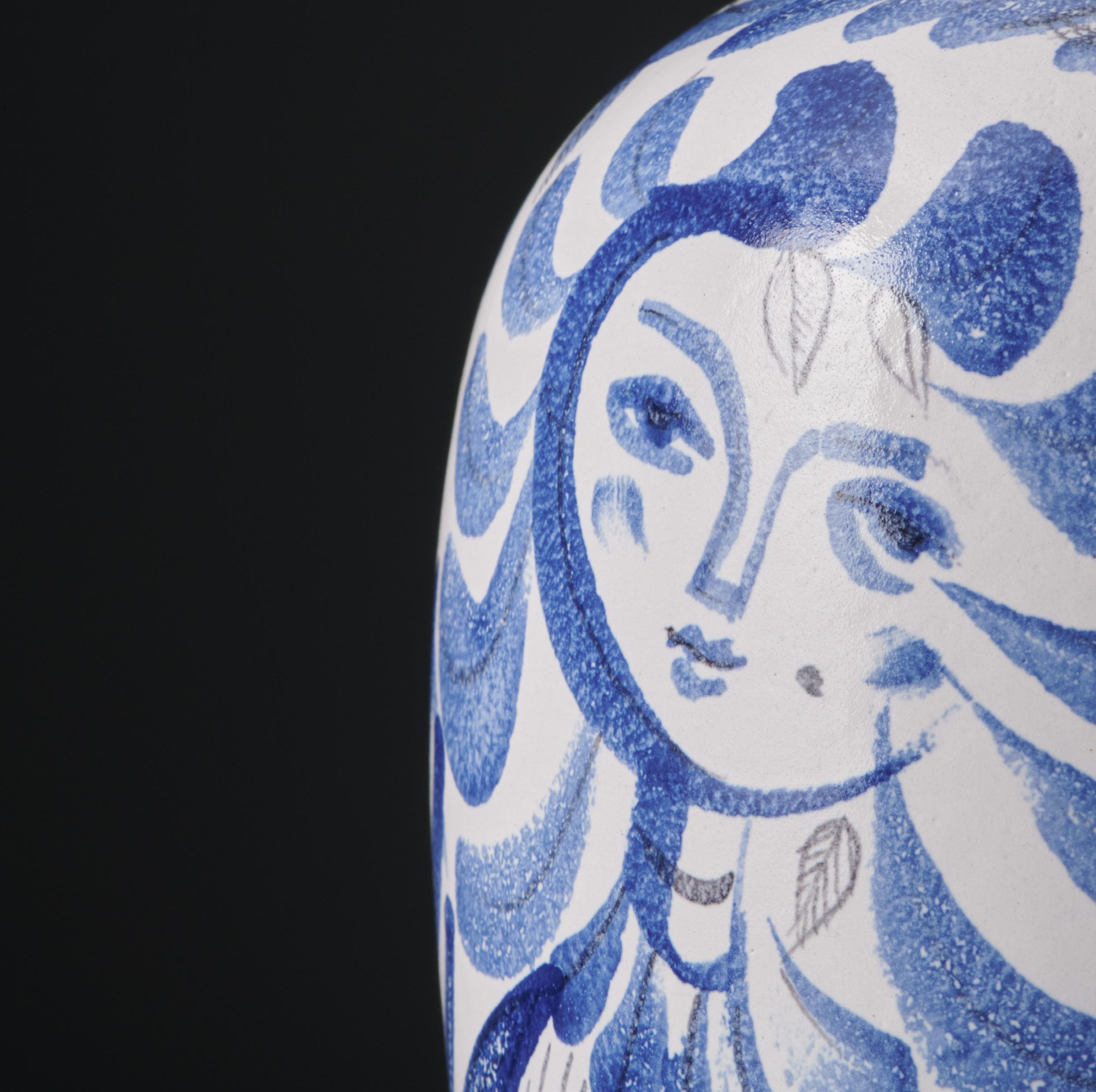
1940s
Hand painted tin glaze
Inscribed ‘STIG L’ with Gustavsberg studio hand and ‘hand drejad’ (hand thrown)
Produced by Gustavsberg
¨I am passing from a flourishing surrealism, prompted by a youthful inclination, to a more severe, pure shape a growth that must be ascribed to the fact that I am growing older and more serious-minded.¨
- Stig Lindberg -
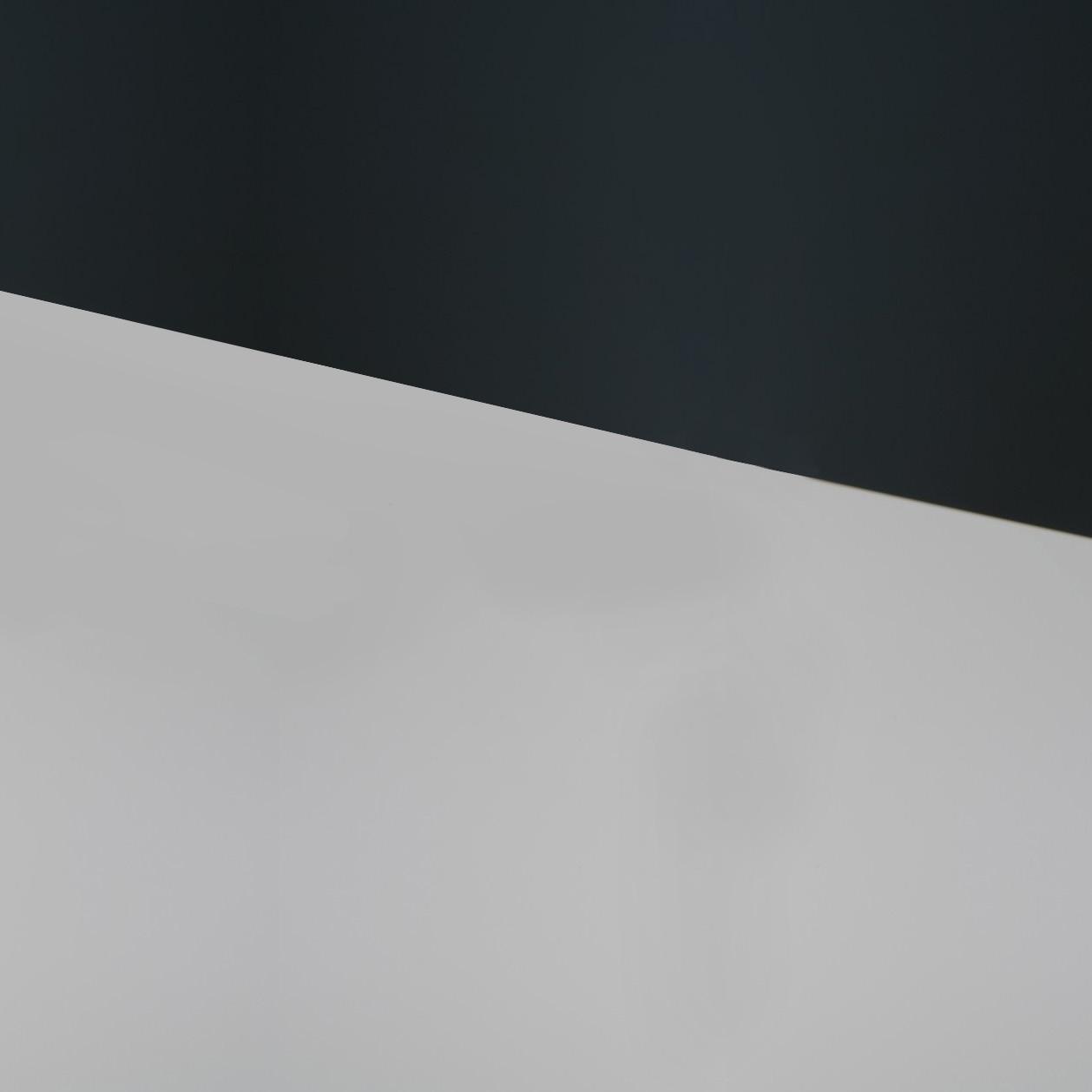
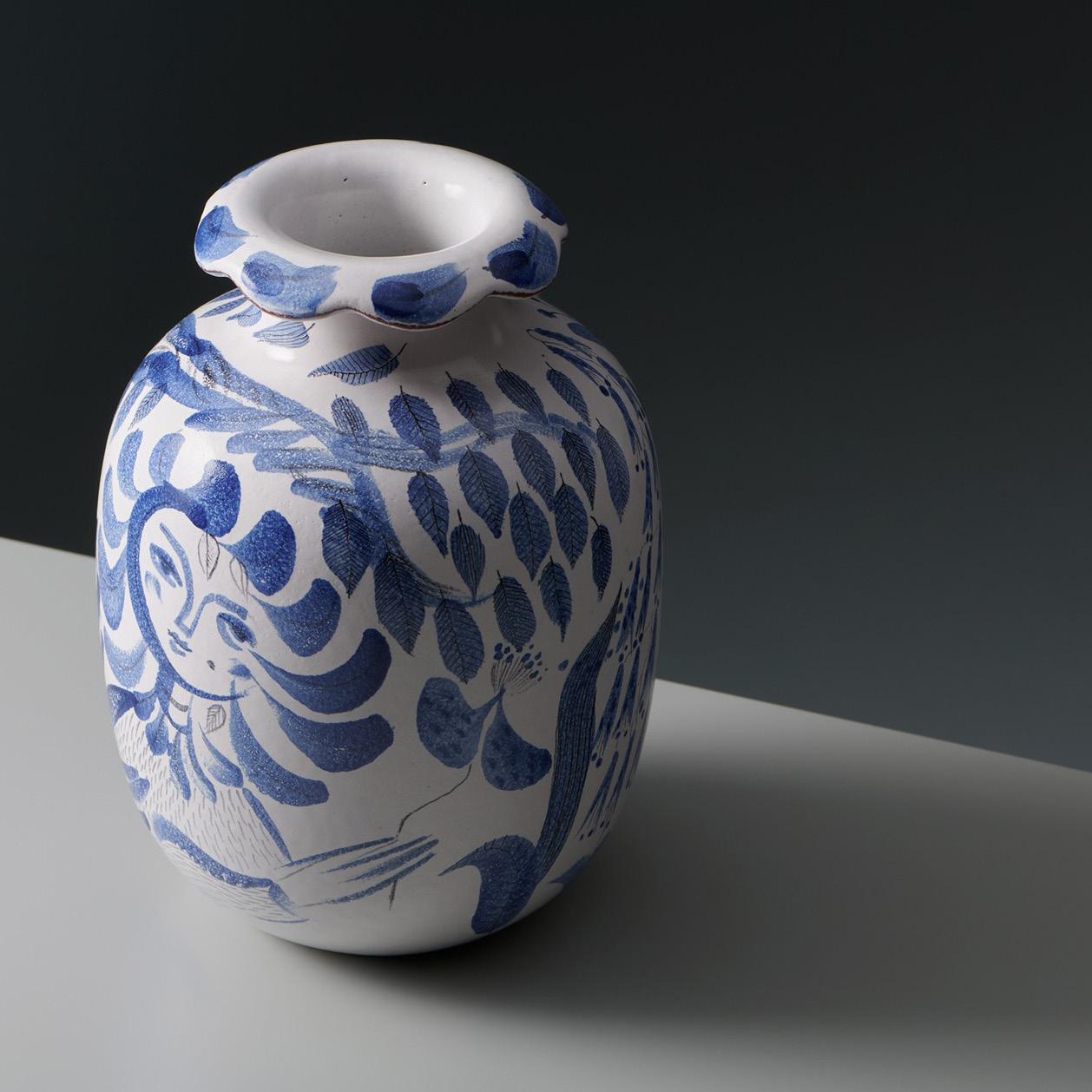

While Stig Lindberg focused a lot on smaller works early in his career, later in his working life he began to focus on rather large threedimensional works. Three commissions in the early 1960s gave him more confidence in this area. After that, he was more involved in these kinds of assignments. One commission included a 38-metre-long and 3-metre-high wall in a hospital in Nacka, Stockholm. For this extremely large work, he used models of different entities and the sand casting technique devised by Anders Bruno Liljefors at Gustavsbergs.
Smaller ceramic walls and tiles were also made, which could be used in domestic rooms. They often contained illustrative figures, repeated in different shades, colours and glazes. Recognisable is the playful style he develops, which can be derived from the children’s book illustrations he made during the same period.
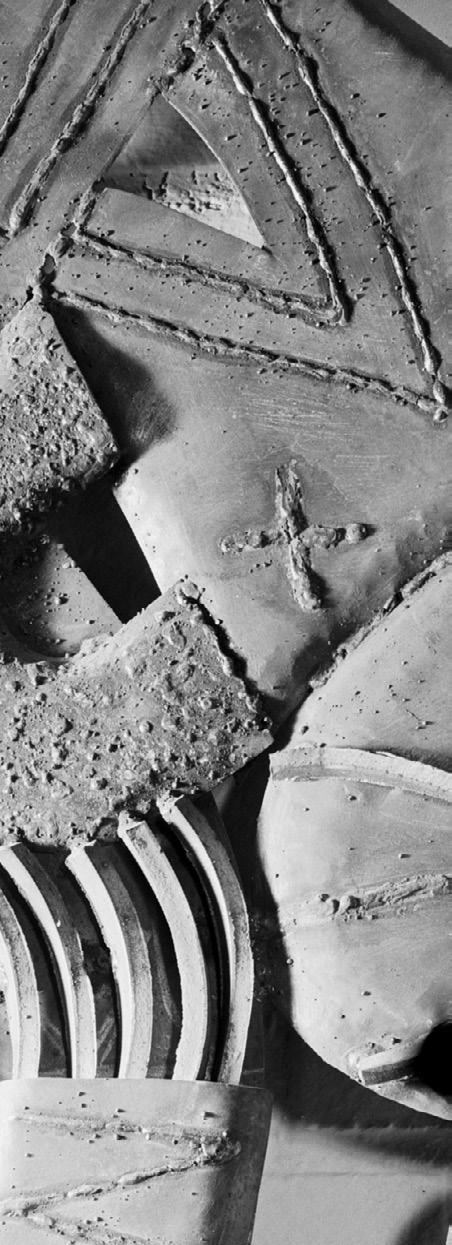
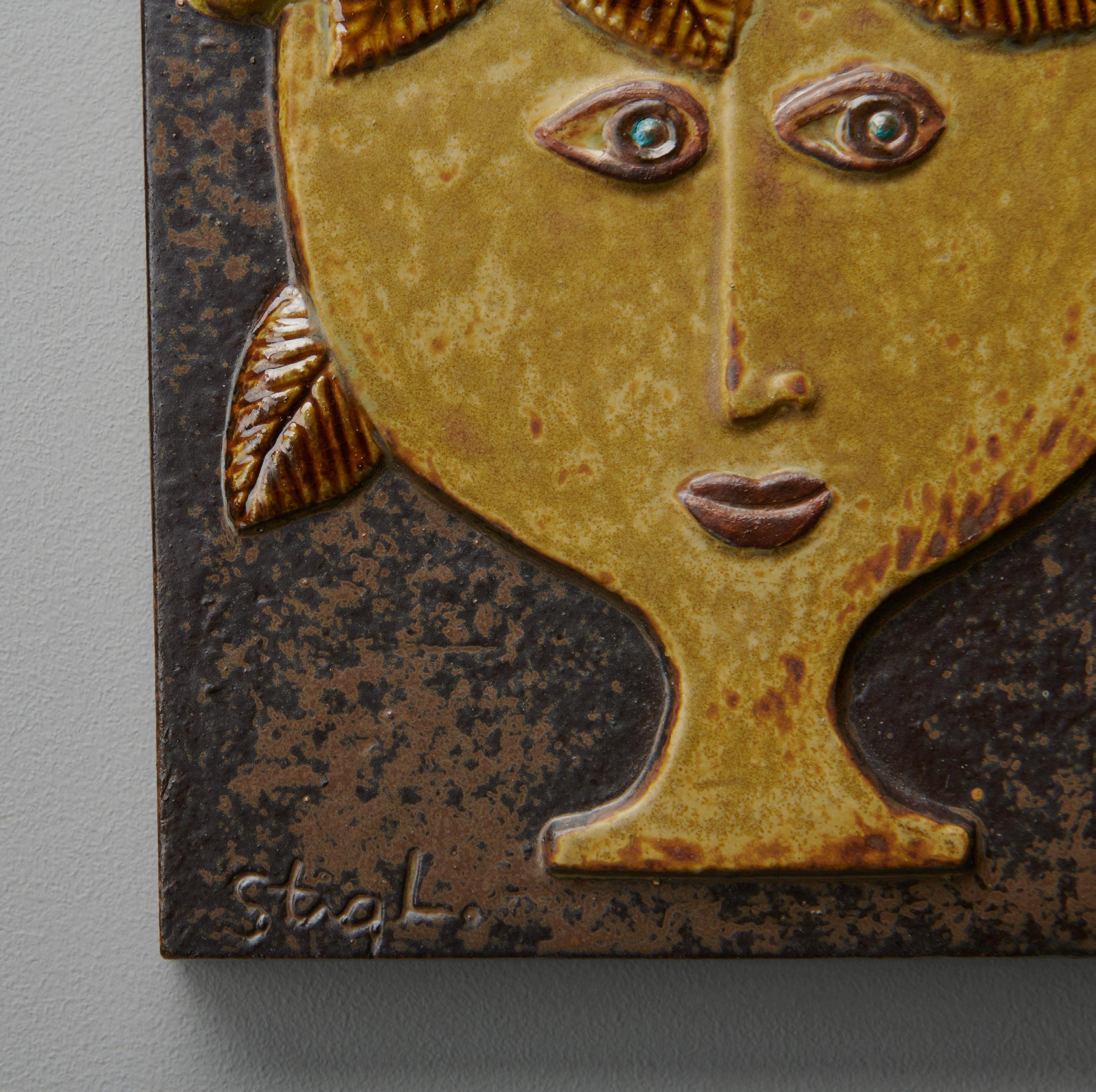
Stig Lindberg
Wall Plaque

1972
Incised, carved and painted ceramic. Details in a shiny glaze
Impressed on the back ¨FRÅN KONSUM STOCKHOLM 1972¨
Incised artists signature on the front ¨Stig L¨
Produced by Gustavsberg
Stig Lindberg
Set of Four Tiles

1970s
Glazed stoneware
Each impressed with ‘Stig L’ and impressed with makers mark
Produced by Gustavsberg Studio



Stig Lindberg
Wall Sculpture
1950s
Glazed ceramic, design in relief Artists signature
Produced by Gustavsberg Studio
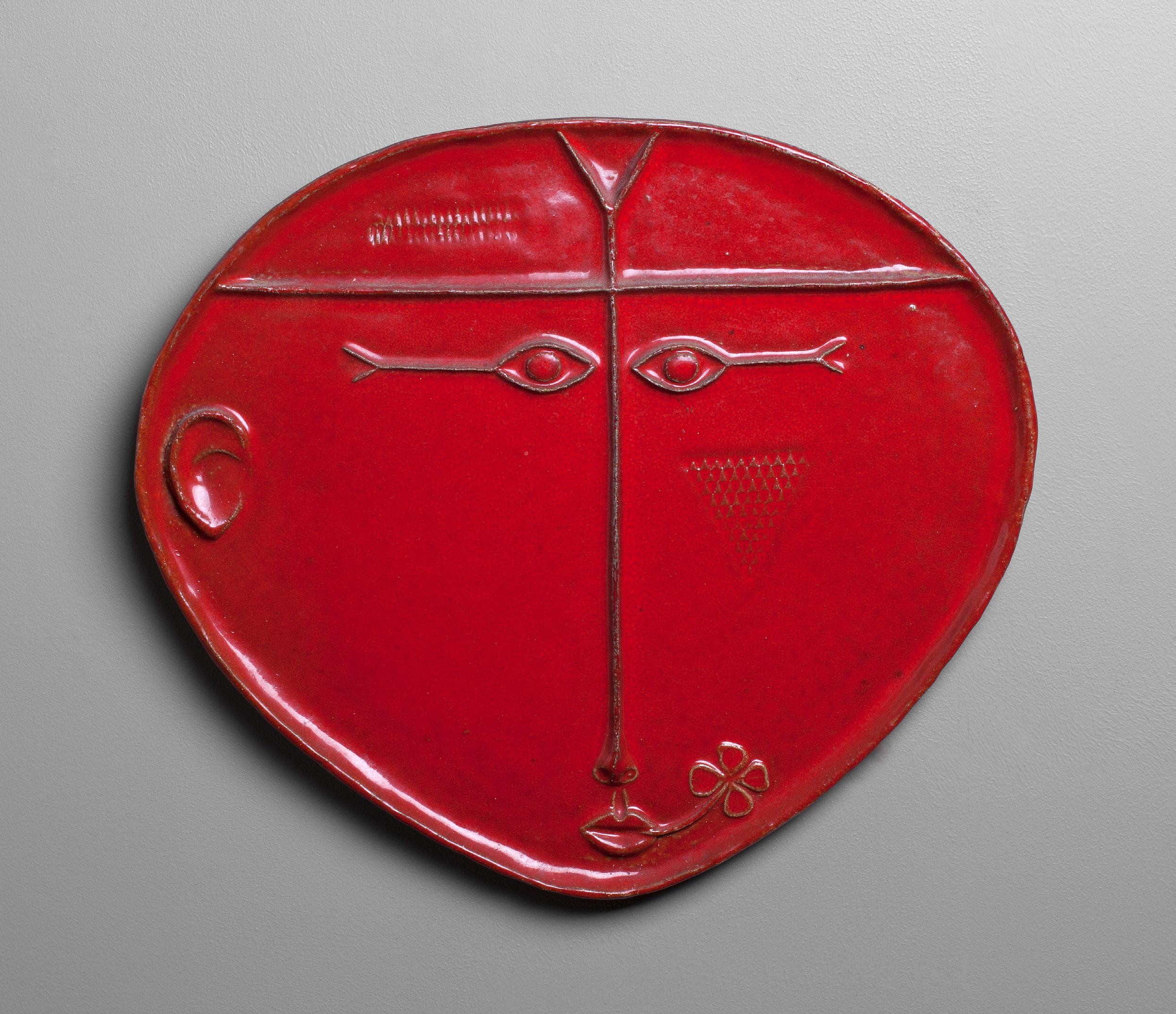


Unlike Gustavsbergs Studio, which focused on artistic expression, Gustavsbergs Fabriker was known for its industrial design. Here, the possibilities of new design were limited by the very narrow tolerances allowed by the standard, which required a different kind of creativity. His curious attitude, which embraced an inventive approach, made Stig Lindberg a successful designer in a variety of materials and products. The intersection between the industrial Gustavsberg Keramiker and the artistic Gustavsberg Studio was abundantly clear when Lindberg developed his enamel technique. While working with bathtub enamel, he happened to see a colour sample, a piece of sheet metal that had floated in and out of the kiln. It struck him that it was possible to work artistically with the material. At the 1951 Milan Triennial, he showed modern enamel painting in an international context for the first time.

Stig Lindberg
‘Colorado’ Teapots
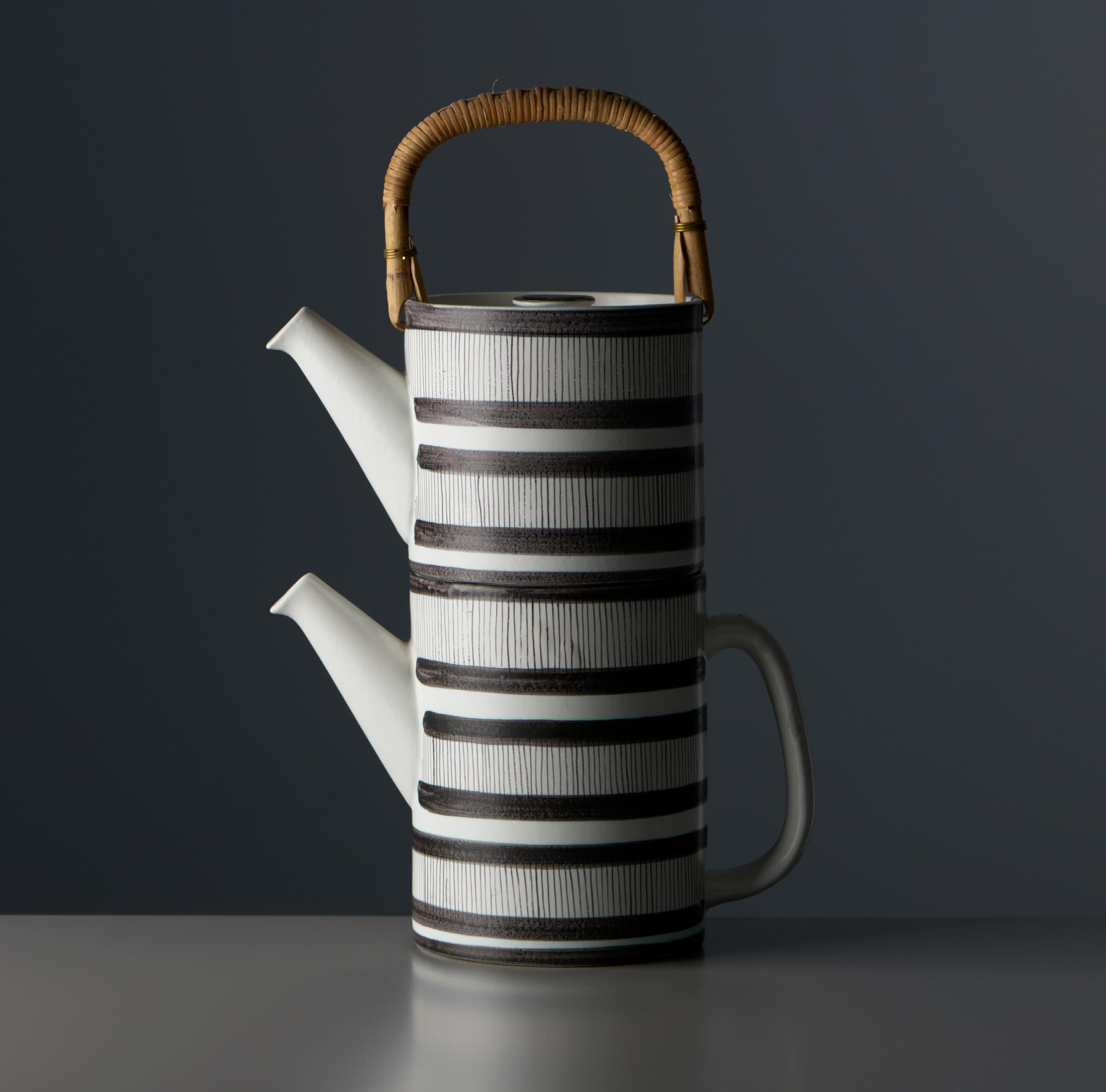
1960s
Glazed stoneware with faience decoration, bamboo
Each stamped with makers mark
Produced by Gustavsberg Studio

Stig Lindberg
Three White ‘Veckla’ Vases

1950s
Stoneware with white carrara glaze
Each stamped with makers mark
Produced by Gustavsberg Studio
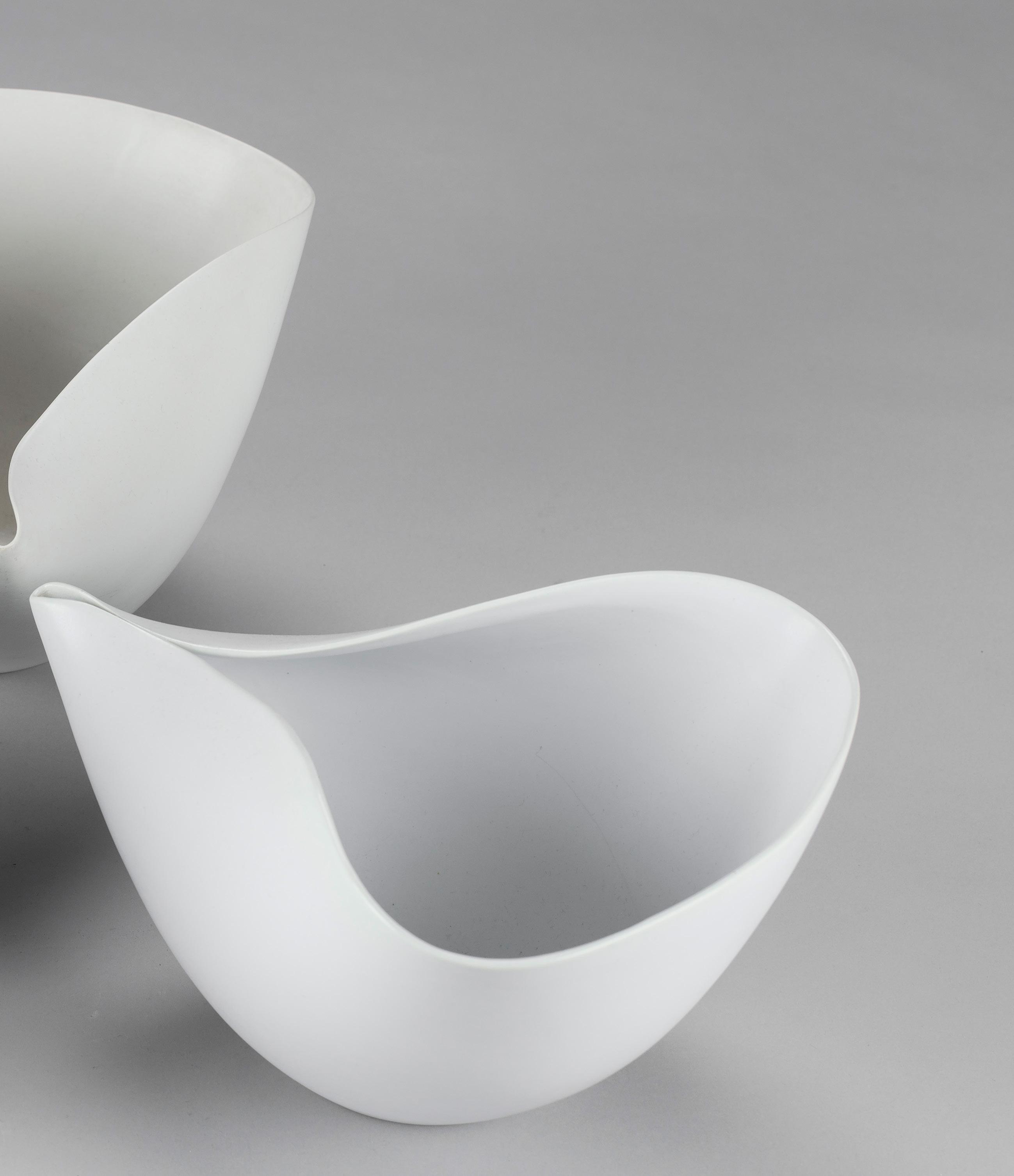
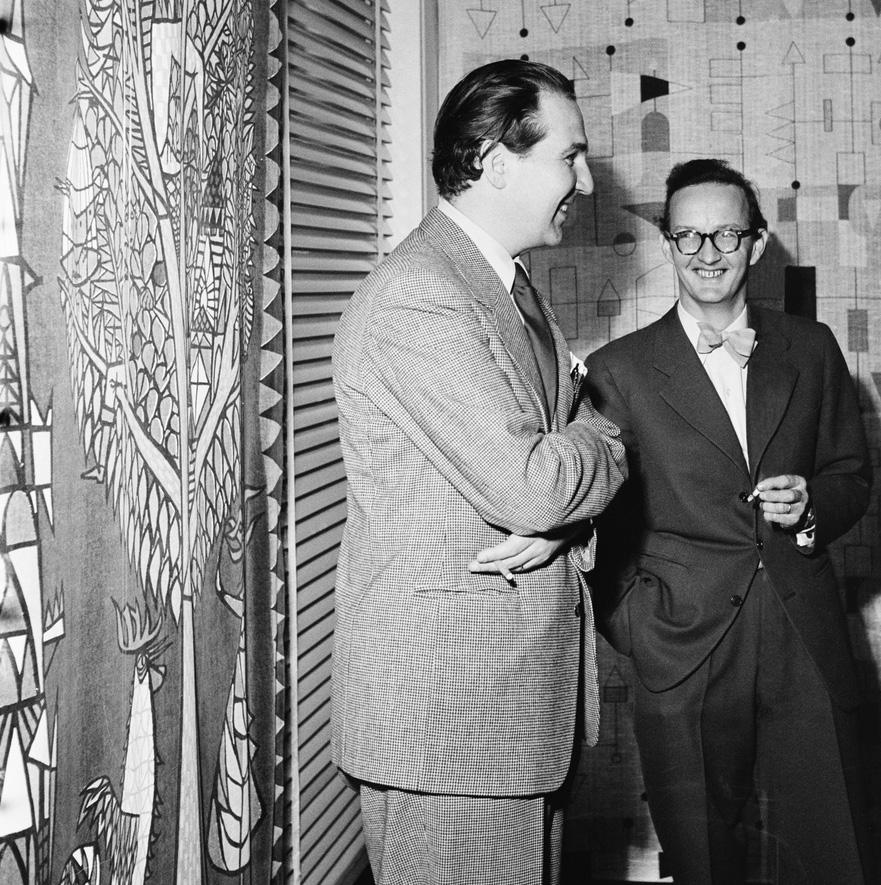
Besides his ceramic works for Gustavsberg, Stig Lindberg also did many commissions beyond. Many know Lindberg for his graphic works. The children’s book illustrations mentioned earlier are a good example; but he also created successful advertising, catalogues, leaflets, wrapping paper and posters.
In 1947, he began a series of designs for the textile studio of Nordiska Kompaniet, a department store in Stockholm, which are among the very best hand-painted textile designs of the period. Soon after, he also developed some table designs in collaboration with NK’s furniture workshop in Nyköping. The tabletops were enamelled with his illustrative figures. The enamel offered a colour palette of up to seven thousand shades after 5-6 minutes of firing in an oven. Table bases were available in different designs, by different designers.
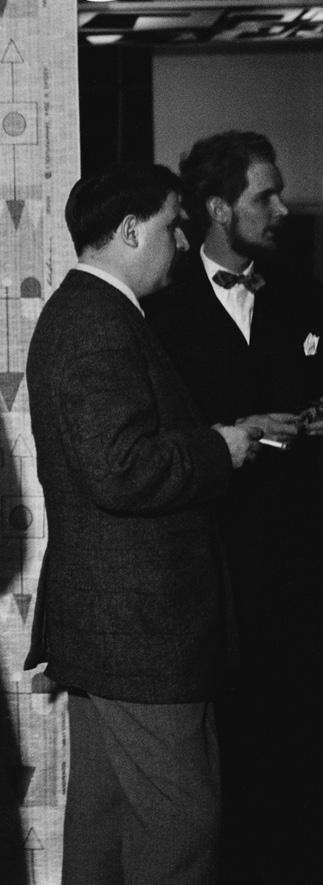
Stig Lindberg
Tapestry
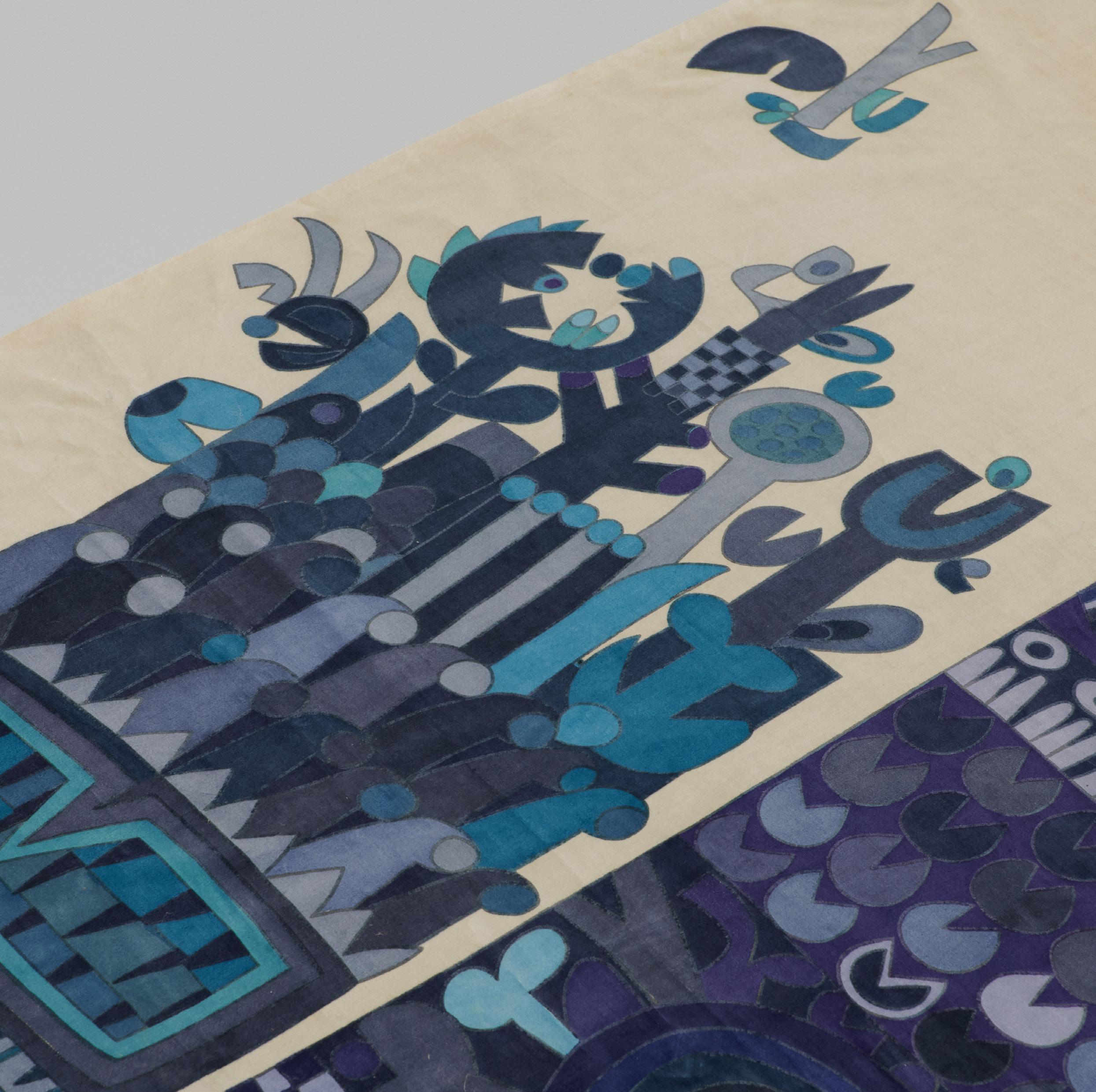
1950s
Velvet with poloychrome motif
Signature ‘Stig L’

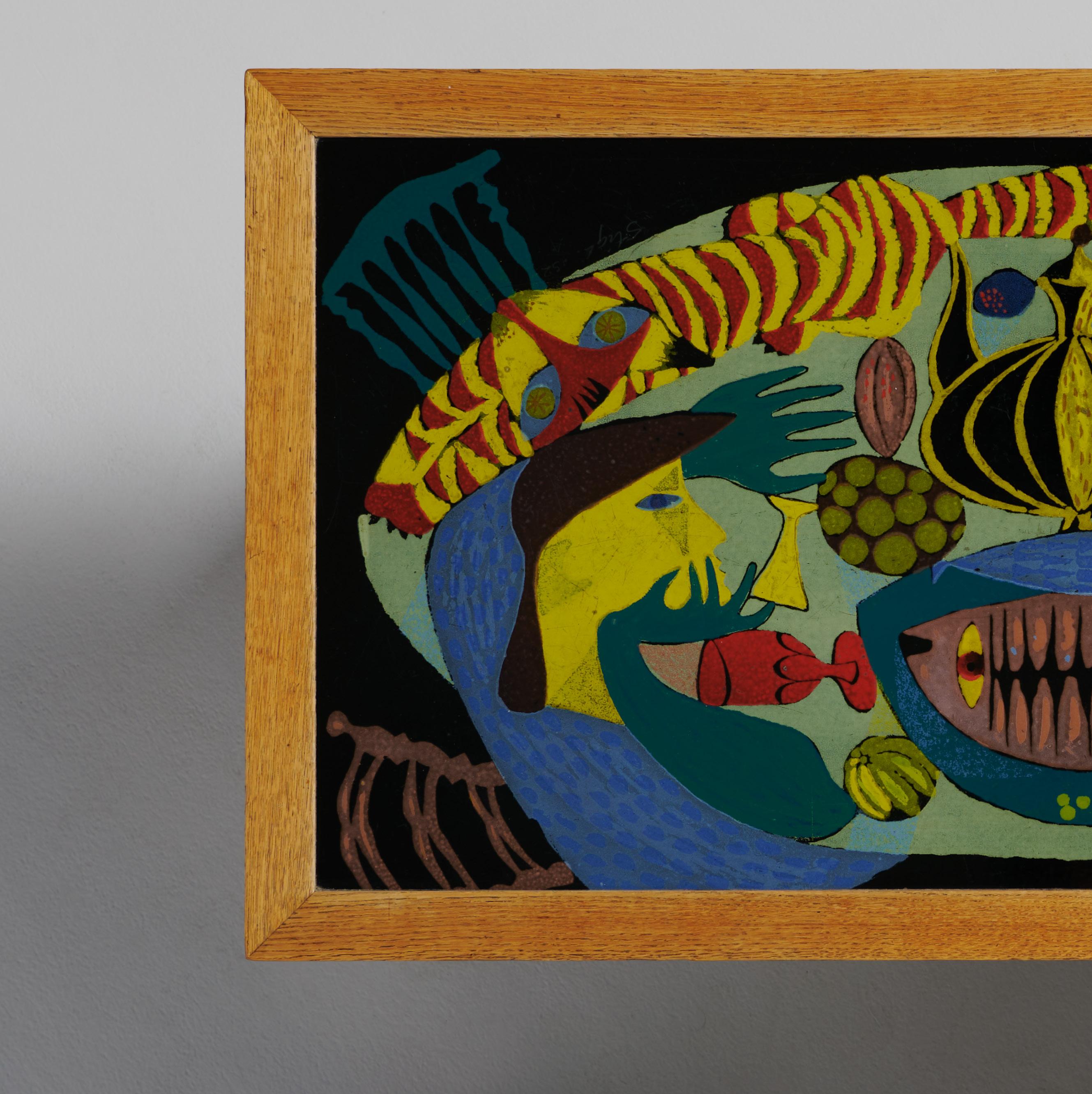

1950s
From the Triva series
Enamelled top, oak base

Base designed by Davis Rosen
Top signed: ‘Stig L. 52’, metal tag: ‘AB NK Made in Sweden’
Produced by NK Nordiska Kompaniet
